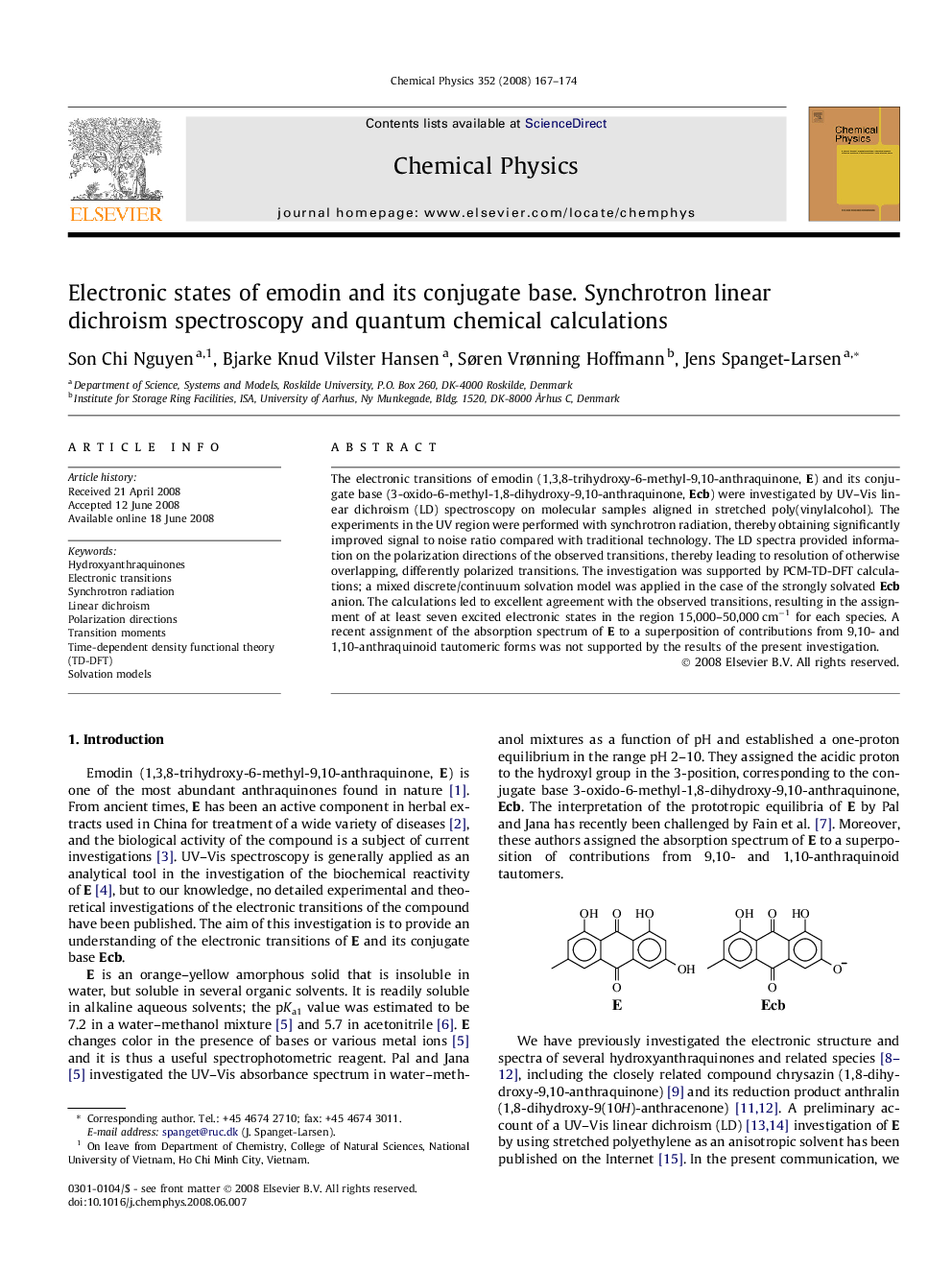| Article ID | Journal | Published Year | Pages | File Type |
|---|---|---|---|---|
| 5375708 | Chemical Physics | 2008 | 8 Pages |
Abstract
The electronic transitions of emodin (1,3,8-trihydroxy-6-methyl-9,10-anthraquinone, E) and its conjugate base (3-oxido-6-methyl-1,8-dihydroxy-9,10-anthraquinone, Ecb) were investigated by UV-Vis linear dichroism (LD) spectroscopy on molecular samples aligned in stretched poly(vinylalcohol). The experiments in the UV region were performed with synchrotron radiation, thereby obtaining significantly improved signal to noise ratio compared with traditional technology. The LD spectra provided information on the polarization directions of the observed transitions, thereby leading to resolution of otherwise overlapping, differently polarized transitions. The investigation was supported by PCM-TD-DFT calculations; a mixed discrete/continuum solvation model was applied in the case of the strongly solvated Ecb anion. The calculations led to excellent agreement with the observed transitions, resulting in the assignment of at least seven excited electronic states in the region 15,000-50,000Â cmâ1 for each species. A recent assignment of the absorption spectrum of E to a superposition of contributions from 9,10- and 1,10-anthraquinoid tautomeric forms was not supported by the results of the present investigation.
Keywords
Related Topics
Physical Sciences and Engineering
Chemistry
Physical and Theoretical Chemistry
Authors
Son Chi Nguyen, Bjarke Knud Vilster Hansen, Søren Vrønning Hoffmann, Jens Spanget-Larsen,
